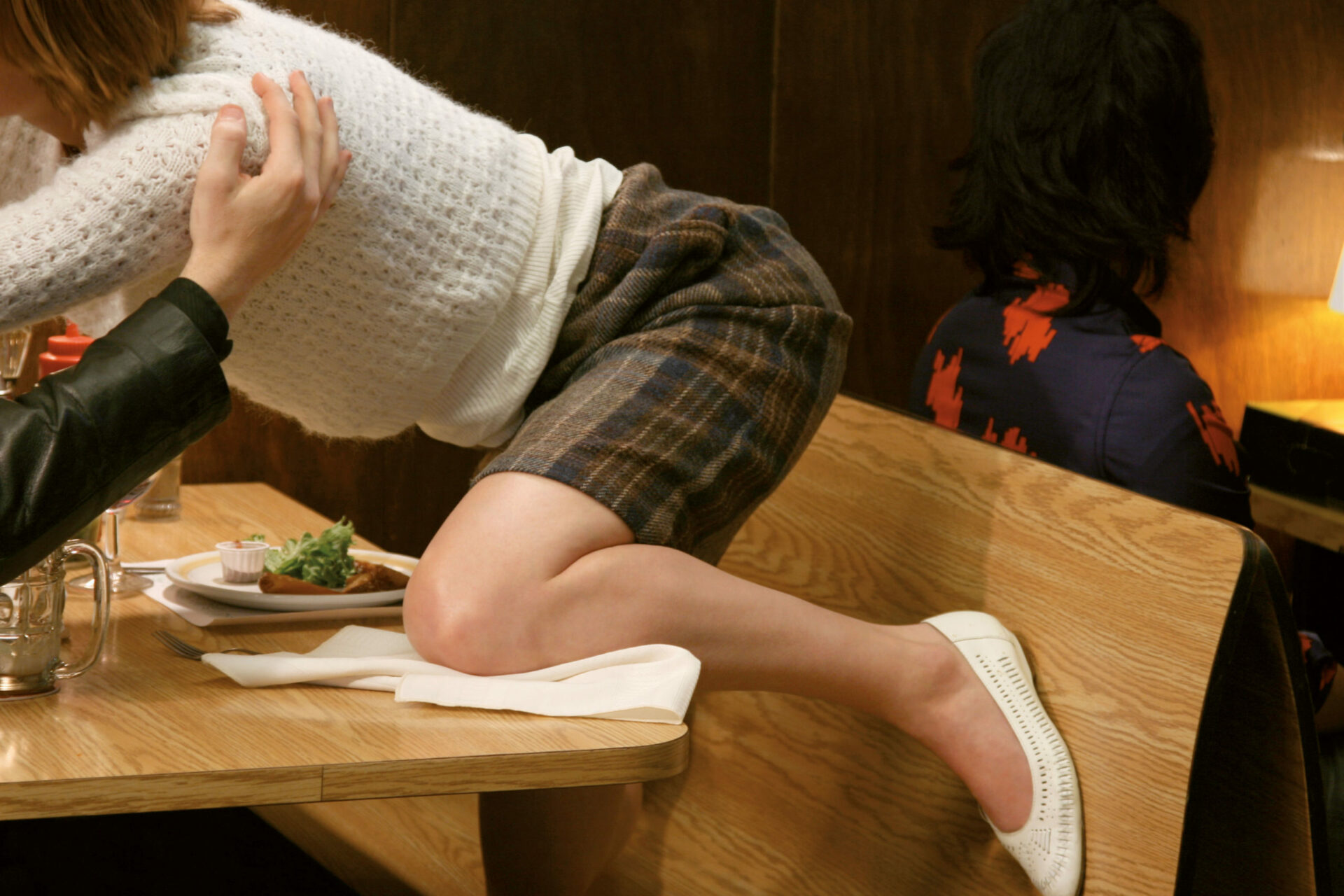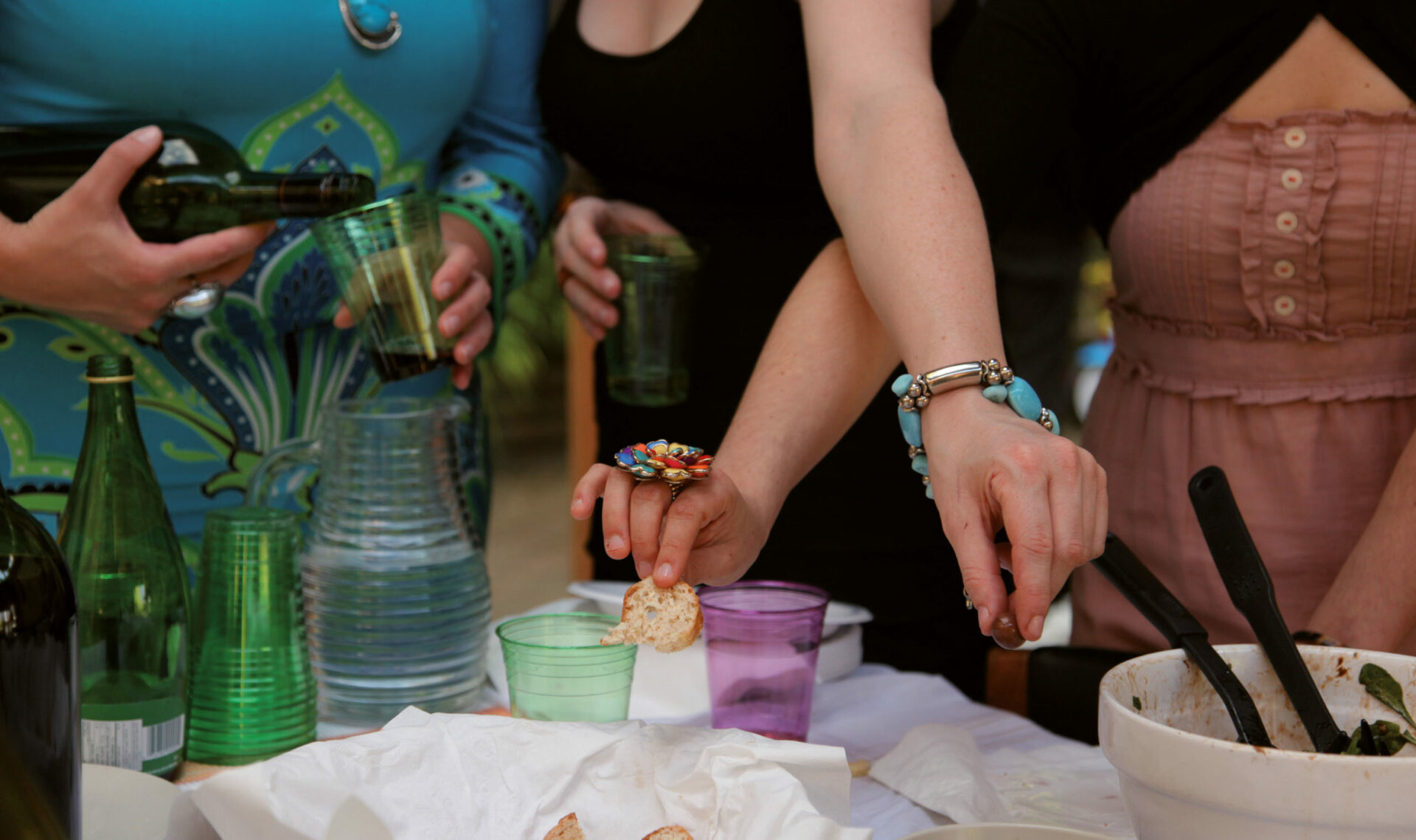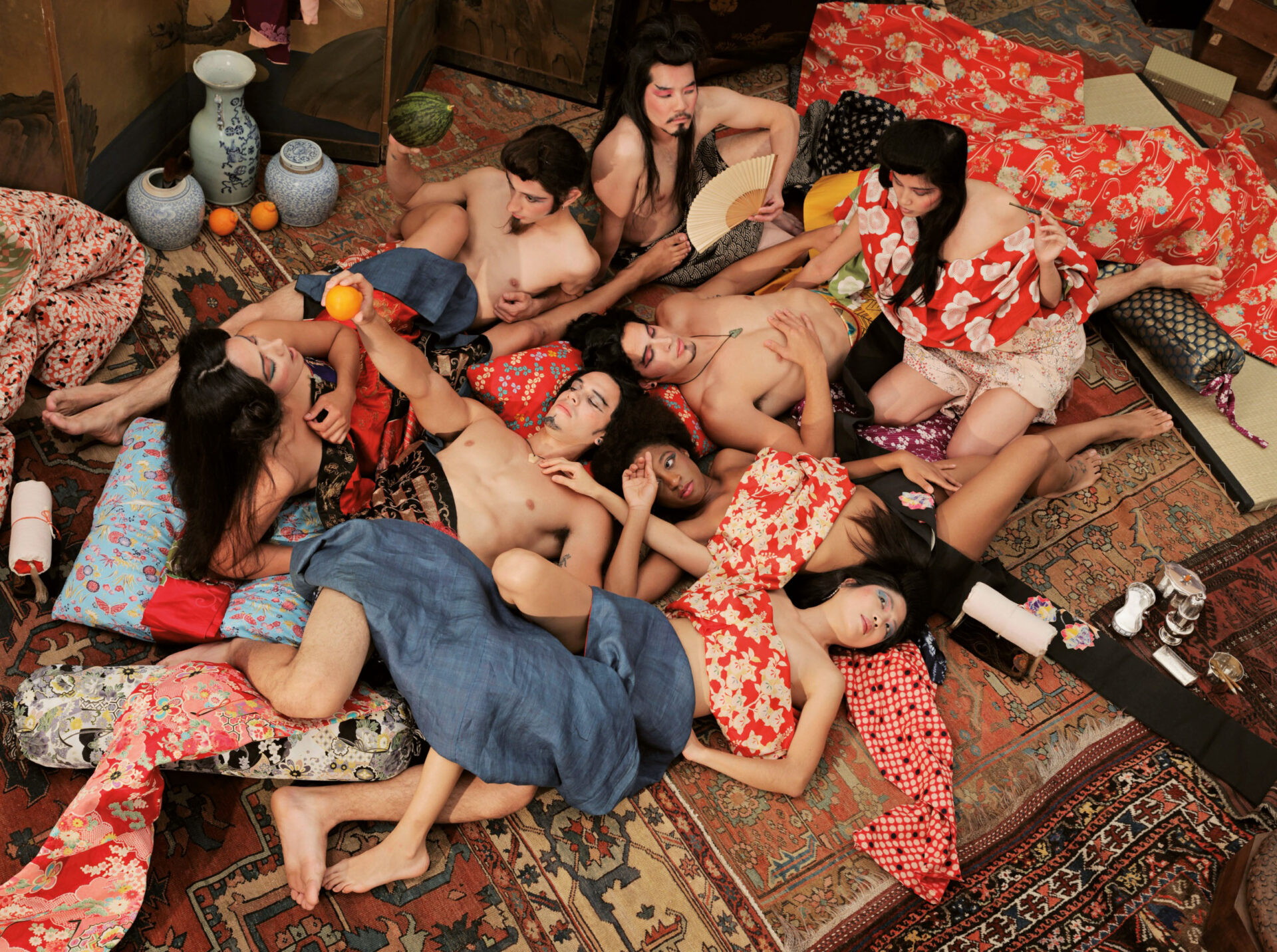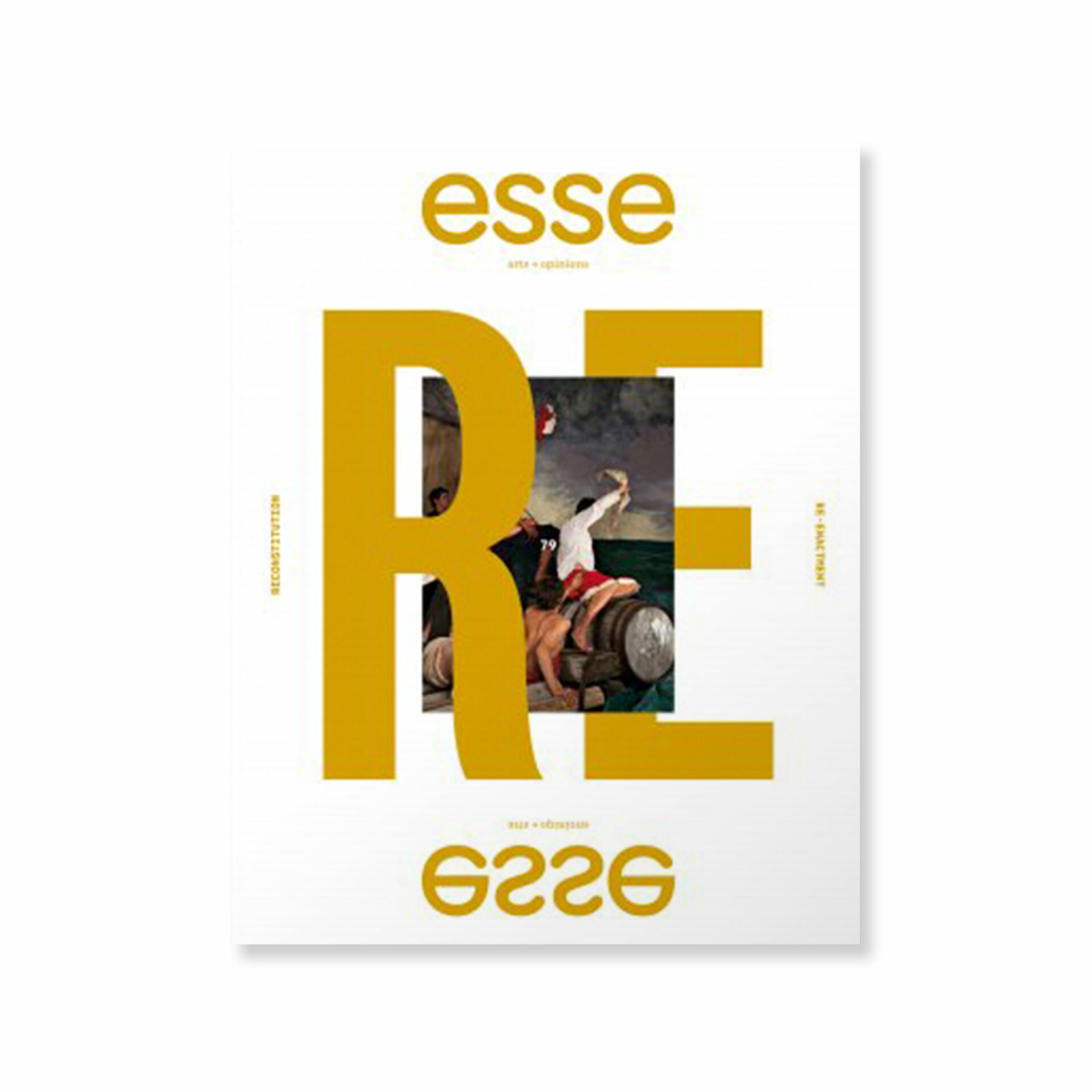
The Raft of The Medusa (100 Mile House) 8, 2009.
photo : courtesy of the artist and of Pierre-François Ouellette Art Contemporain, Montreal
Re-enactment, in its most common sense, signifies the representation of a historical event as it actually occurred, a representation meant to reveal a truth that we had failed to grasp. In this occurence, there is the wish — or the hope — for truthfulness in terms of its staging. Indeed, a reconstruction rests on rigorous documentation, and it is understood that it be as close as possible to what actually happened. The aim of such a concrete actualization of a drama is thus to bring to life an event that would otherwise have remained historical, of the past, and as such, inaccessible to experience. Reliving the action as it occurred is said to allow us to see it in a new light, possibly truer to its actual unfolding. Concrete action thus harbours a truth that would not have otherwise emerged, even if one knew what actually occurred. This narrative concretization enables a unique experience, bearing truths that remain veiled in the inertia of passive knowledge. It is the obvious and implicit motivation for engaging in such an endeavour.

Lunge, from the series Traces, 2010.
photo : courtesy of the artist and of Pierre-François Ouellette Art Contemporain, Montreal
Transposing all this to the art sphere brings us fairly close to the idea of re-enactment as defined in the glossary of the Québec Triennial 2011 catalogue: an “actualization significantly at odds with post-modern notions of appropriation and citation.” With the further distinction I believe necessary of setting re-enactment or reconstruction against a certain deconstructivist postmodernism. For there is of course construction in reconstruction, which would tend to distance it considerably from a postmodern inclination to undo in order to examine the mechanisms of constructing verisimilitude — with an emphasis on “similitude,” or simulation. Re-enactment also involves a search and hope for verisimilitude and truth, even in an outright copy or reproduction. Real knowledge and know-how is brought about through the event, while the only truth to which the deconstructive approach holds are the devices of representation.
Adad Hannah’s work seems a particularly good example of re-enactment thus understood. After all, the artist has produced several full re-enacments, often closely inspired by well-known and revered historical works of art. One thinks of Bourgeois de Calais: Crated and Displaced (2010), inspired by the work of Auguste Rodin, or his interpretation of Géricault’s Raft of the Medusa. Beyond reproducing a masterpiece of art history, the latter work, titled The Raft of the Medusa (100 Mile House) (2009), required the participation of the entire community of 100 Mile House, a small town of around 2000 people. To recreate the painting, commissioned by wealthy rancher, community activist, and art collector Gus Horn, twenty students and two itinerant tree planters were required to hold a pose for 5 to 10 minutes. In the video work derived from this monumental construction, we recognize the same strenuously held fixity of bodies, limbs placed in sometimes demanding and unforgiving positions. The performance was certainly strenuous, and some of the extras even prepared for the composition with yoga exercises. Not only does Gus Horn now have a replica of Géricault’s work, but in a way he took part in making it a real experience. Further, Hannah tells us, the whole community participated in erecting the scenery and, itself suffering the region’s decline in resources and economic activity, wholly threw itself into the tragedy. The work is closely tied to the modus operandi of its creation. Its very experience adds an additional touch of humanity to the trembling figures and their arduous test of motionlessness, each of them posing as Géricault’s models might well have posed for the creation of his painting.

18 minutes, detail, 2010.
photo : courtesy of the artist and of Pierre-François Ouellette Art Contemporain, Montreal
However, it is not always known artworks that serve as exploratory references for the artist. Specific places also give rise to scenes, as in Daydreams of the Drunken Scholar (2012). Its decor was built from pieces Hannah selected from the San Antonio Museum of Art Collection, which he arranged in the two galleries best suited for his narrative construction, the library and bedroom located in the Lenora and Walter F. Brown Asian Art Wing. The outcome is a series of video and photographic scenes that seem to be directly inspired by Japanese Kamasutra, where half-clothed bodies, lascivious and sensual, appear to lie in postcoital repose. But here, it is the objects and places that engender the work, as if they harboured a narrative and symbolic potential that needed only to be awakened. We see here how far we have come from the reactive suspicion and critique – passing judgement of all narrative constructions and illusions prescribed by deconstructive logic.
It is perhaps in the Traces series, developed between 2007 and 2010, and in 18 Minutes, from 2010, that we fully grasp the specifically human dimension of these works and the approach underlying them. In one as in the other, we closely follow the characters’ gestures via close-ups of their hands as they interact with one another. These various engagements and connections were captured during a party organized for the occasion. Consisting of an installation made up of six screens set side by side on a horizontal line, the work is indeed . . . touching.

After a Gentle Storm, Daydreams of The Drunken Scholar, 2012.
photo : courtesy of the artist and of Pierre-François Ouellette Art Contemporain, Montreal
It is obvious here that re-enactment (be it a manifestly composed simulation) can deliver its share of emotion, kindling sensory evocations even when derived from the reconstruction of an accepted reference. For where deconstruction claimed to dislodge the work to reveal its underpinnings, reconstruction prefers to simply accept it, and to accept itself within it.
In short, what Adad Hannah has accomplished through re-enactment shows that it is everywhere a question of truth, that he works toward truth: truth in the gesture borrowed from the model and truth in the experience that one attempts to recreate in performance. The actions of reuse and recomposition are not motivated by suspicion, by instilling doubt, by striving single-mindedly to reveal the falsity of representation. They are led by the pleasure of re-making, with the further conviction that one can thus create a new work, that something of the mysterious still inhabits the original model and can either be transferred or displayed through a re-enactment in performance. Thus, one must clearly accept to simultaneously play the work and to play at work. To the suspicion-based deconstructivist approach, re-enactment opposes an era of play through re-playing. It suggests — the turn of phrase is both charming and revelatory — that one play the work, as if it were a challenge to signification and to the curiosity of one who still believes that work-making may proceed from its own truths.
[Translated from the French by Ron Ross]
